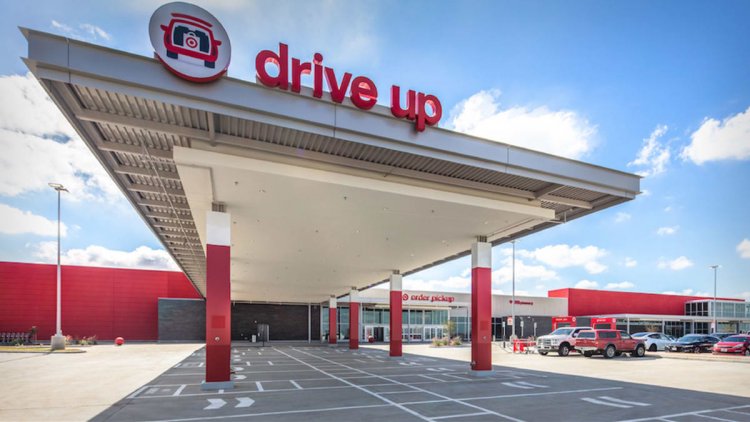Unlike Amazon, Target Is Fine With You Returning Stuff — Here's Why
Target is making a calculated bet that absorbing losses on returns will pay off in the long run.

Target is making a calculated bet that absorbing losses on returns will pay off in the long run.
Retailers’ patience with profit-sucking online returns, seems to have reached a boiling point. Witness Amazon Inc.'s (AMZN) - Get Free Report recent decisions to start charging $1 on some returns and labeling products as “frequently returned,” presumably to discourage people from buying them.
But then there’s Target Corporation (TGT) - Get Free Report. The company is actually making it easier for shoppers to return items through its store drive-by program, in which people don’t even need to leave their vehicles to get refunds.
What makes Target’s strategy even more striking is that it runs counter to the two things the company has long cherished: the profit margin and the primacy of the physical store.
More Returns, Fewer Visits?
Target arguably generates most of its brand cachet from its home goods and apparel/accessories, the latter of which generated nearly $18 billion, or 17%, of its total revenue of $105 billion in 2021.
In a recent report, Coresight Research estimates the overall average return rate of online apparel orders in the U.S. for the 12 months ended March 6, 2023 was 24.4%, or $38 billion.
Such a high return rate means retailers would need to spend $25.1 billion this year alone to process those returns. Or put another way, retailers would need to spend two-thirds of the price of the item just to take it back.
“The combined costs of shipping, processing and restocking can have a significant impact on a retail company’s bottom line,” the report said.
And Target has traditionally valued its bottom line, to the point of keeping inventories low and alienating customers with bare or empty shelves.
Returning items without having to leave the car also seems to another core Target tenant: keep the customer in the store.
Target shoppers are notorious for always buying way more than they intended when they enter a store. That’s why Target keeps its grocery section in the back, so customers need to pass through most of the store and thus be tempted to add more stuff to their baskets.
Therefore, why would Target make it easier for customers to return items and not visit its stores?
Long-Term Loyalty Over Short-Term Costs
Under CEO Brian Cornell, the company has adopted a more holistic, long-term view of its business.
E-commerce and physical stores are not separate things but rather an integrated operation that allows Target to meet customers wherever they are, said Carol Spieckerman, president of Spickerman Retail consulting group. And when you do that, it inspires loyalty and more sales over the long term.
“When we take friction out of the process and make it easier for guests to just fall more and more in love with Target, that's the most powerful economic relationship to be focused on,” chief financial officer Michael Fiddelke recently told investors. “I think we've learned that time and time again, and Drive-Up is a perfect example.”
In other words, Target may cede profits on those drive up returns. But such a convenient service will pay off if the customer will eventually return to the store and buy more merchandise in the future.
“It’s better to lose money from returns than see consumers go somewhere else to shop,” Spieckerman said.
Plus Target can still do things to coax those shoppers to buy things. Imagine a consumer using the returns app suddenly sees a recommended product that they can purchase with the store credit. They can drop off the return and then receive a new item during the same trip.
“They might as well pick up some sales,” she said.
As for shoppers not visiting stores because of drive-by returns, Target executives say that’s just not happening.
“We watched it carefully as we expanded Drive-Up,” Cornell told investors. “We said, all right, is this going to impact the guest engagement in store? It's quite the opposite. As guests use all of our capabilities, they actually spend more dollars in-store and just reward us with more trips.”
Amazon: Stop Losing Money
Amazon faces a different situation. For years, the company has been willing to forgo profits in order to capture market share and expand into new industries. But under Andy Jassy, who succeeded founder Jeff Bezos as CEO in 2021, the company wants to cut costs and boost profits, which is why the e-commerce giant has been focusing on returns.
Plus Amazon lacks a crucial asset that Target possesses: physical stores. Target has more ways to drive customer loyalty, whether a store, website, or mobile app. That’s why the company can afford to play the long game; it’s willing to lose money on drive-up returns knowing those same customers will reward them by purchasing items in a store.
As an e-commerce retailer, Amazon has no such outlet. That’s why the company increasingly looks at returns as a profit suck instead of an opportunity to capture a future sale.
What's Your Reaction?


























































